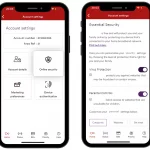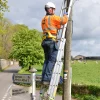London UK FTTH ISP Community Fibre Doubles Broadband Speeds
Alternative network provider Community Fibre, which is currently deploying their Fibre-to-the-Home (FTTH/P) network across large swathes of London, has doubled the speed of their ‘Basic’ and ‘Ultrafast’ broadband packages at no extra cost for both new and existing subscribers.
The move means that their £20 per month ‘Basic’ 20Mbps package (1Mbps upload) has now been boosted to 40Mbps, while their £35 per month 100Mbps ‘Ultrafast’ tier has similarly jumped to 200Mbps (both now also offer symmetric speeds). Naturally the ISP’s £50 per month ‘Gigafast’ package remains at 1Gbps because, seriously, there’s virtually zero reason to double that right now.
Jeremy Chelot, CEO Community Fibre, said:
“It’s a great time to join Community Fibre, with increased speeds across our residential and business packages and a fair price structure, we are leading the way across ISP’s. We are very happy in the fact we upgrade all our customers, in and out of contract. With no price rise, no gimmicks, no retention tools, just a fair upgrade to our loyal customers.
This highlights our commitment to bring a faster, better, fairer and more affordable internet to more and more consumers.”
Community Fibre expects to have extended their Gigabit capable FTTH/P broadband network to around 60,000 homes in London by the end of 2018 (mostly council / social housing) and their medium-term aspiration is to reach 500,000 by the end of 2022 (150,000 of which have already been contracted).
Advertisement
Meanwhile the ISP said that for business customers their “speeds have been upgraded and prices restructured“.
| Residential (inc. VAT) |
1000/1000 | £50 |
| 200/200 | £35 | |
| 40/40 | £20 | |
| Business (excl. VAT) | 1000/1000 | £200 |
| 300/300 | £80 | |
| 40/40 | £40 |
Mark is a professional technology writer, IT consultant and computer engineer from Dorset (England), he also founded ISPreview in 1999 and enjoys analysing the latest telecoms and broadband developments. Find me on X (Twitter), Mastodon, Facebook, BlueSky, Threads.net and Linkedin.
« Vodafone UK Launch 4G SIM Mobile and Home Broadband Bundles


















































Comments are closed